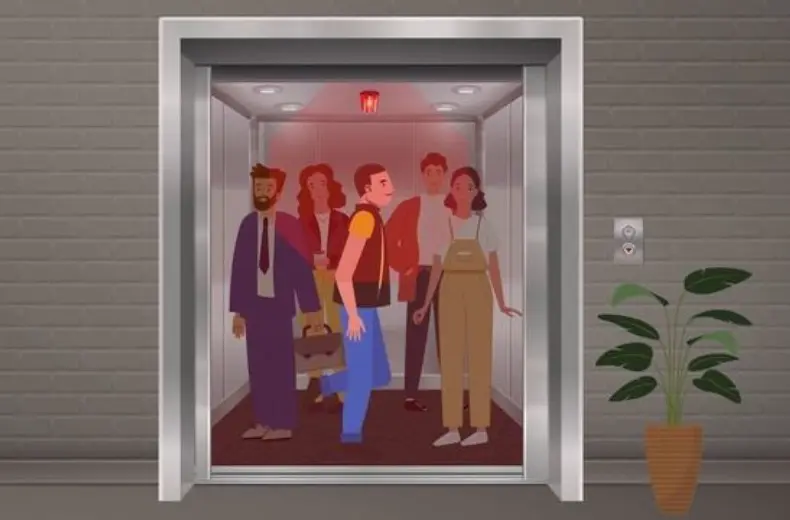We often get requests like this from customers: “Can you make the elevator car bigger? The load remains the same. We just want more space so that we can ride more comfortably.”
I completely understand this idea, it sounds good. But my answer is:
No, we can’t increase the size of the car without increasing the load. It’s not safe, and the consequence of doing so is that the elevator is easily overloaded and falls.
When you increase the space of the car but keep the load the same, you break the balance between structure, safety and physics. More space can accommodate more passengers, but when the weight distribution changes, the braking system is under more pressure. Even if the elevator may pass the inspection when it leaves the factory, when it is overloaded or stuck between floors, the system will be very likely to fail.

Why is it dangerous to keep the load constant?
Because the elevator system is a holistic design: car size, load capacity, motor strength, cable tension, braking force, shaft size, and even door position all affect each other. If you change just one factor without adjusting the others, the entire elevator’s safety guarantee will be invalidated.
Here are some technical reasons explained in simple terms:
1. A larger car can accommodate more passengers.
People don’t calculate weight – they judge by space. A spacious car is more likely to accommodate more people (or heavier items, such as luggage or shopping carts) entering, resulting in a momentary overload (and the overload weight may be much greater than the rated load of the elevator).
2. The weight distribution changes.
The way weight is distributed over longer or wider floors affects the balance and braking performance of the elevator. The system may not respond properly during an emergency stop.

3. The performance of the brakes and motors may be poor.
The braking distance and reaction speed depend on the rated load and the amount of mass moved. Longer or heavier structures may exceed the capacity of the motor torque or brake holding force.
4. The clearance with the shaft wall may be reduced.
If the car is too close to the edge of the hoistway, there is an increased risk of scratching, vibration, and even, in rare cases, getting stuck. It can also impede proper airflow, lighting, and ventilation.
Real Cases:
We have already witnessed the consequences of ignoring these rules. While these two examples did not involve changes to the car’s size, they illustrate what happens when an elevator exceeds its safe weight limit.
Case 1: Guangzhou Hotel Demolition Accident (2014)
During the dismantling of an old elevator, workers loaded the cabin with removed parts — including a motor, control panels, metal doors, and even an oxygen tank. The total weight far exceeded the design limit.
What they didn’t know was that the elevator’s safety ropes and speed limiter had already been disconnected during earlier steps.
With nothing left to hold the weight, the suspension rope failed.
The cabin fell directly to the bottom of the shaft.
Two workers were killed instantly. Two others were critically injured.
Case 2: Sichuan Residential Complex Incident (2024)
In another incident, technicians replacing guide rails loaded eight heavy steel beams and tools into a cabin rated for 1140 kg.
The actual weight? 2300 kg.
The cabin shook violently during lifting, and the entire hoisting mechanism failed.
The cabin dropped, killing both technicians inside.
Both incidents happened during construction — not in daily use — but the mechanical principle is exactly the same.
When the elevator structure carries more than it was designed for, even a small miscalculation or system failure can turn deadly.
What Do the Safety Standards Say?
Elevator design isn’t just based on common sense — it’s regulated by strict international and national standards.
In China, the key reference is GB7588, which is based on Europe’s EN81 series.
Here’s what these standards require:
- The cabin’s size must match the rated load. For example, a 1000 kg rated load should have a cabin area no larger than a specific size (usually around 2.0 m² to 2.4 m²).
- The clearance between the cabin and the shaft wall must meet safety minimums. This allows for emergency rescue, air circulation, and avoids collision.
- All systems (braking, hoisting, leveling) must be tested under the final configuration. If you change cabin size but not the testing process, you are operating outside the certified envelope.
So even if you feel the cabin looks fine after being enlarged, it technically becomes non-compliant, and no responsible engineer will sign off on that.
Can We Still Improve Comfort Safely?
Absolutely. At LJ Elevator, we understand that space is a priority for many building owners especially in high-end residential, commercial, or hotel projects.
Here are safe and compliant alternatives to improve comfort without compromising safety:
- Redesign the cabin interior layout.
Slimmer panels, integrated lighting, and recessed control systems can free up space inside the same certified footprint. - Use mirrors and materials to create a sense of openness.
A mirror on the back wall, lighter color tones, and LED lighting can make a small cabin feel much larger. - Upgrade to a higher-capacity model.
If your shaft has the physical room, we can redesign the entire system to support a larger cabin with a new load rating, certified and tested. - Install intelligent passenger control systems.
Modern elevators can count passengers and limit entry when the system detects it’s close to full. This helps avoid overloading, especially in public buildings. - Plan traffic more efficiently.
For buildings with high flow during peak times, consider multiple smaller elevators instead of one large cabin. This often improves comfort and waiting time.
Conclusion:
As an owner, your goal is clear: provide users with a comfortable, convenient and enjoyable experience.
But elevators are more than just design highlights. They are sophisticated machines that carry our daily lives. A larger cabin may look more beautiful, but without a more robust system, it can turn silent risks into real tragedies.
So the next time you consider resizing an elevator without adjusting the load, ask yourself, “Is it worth risking lives to add an extra 10 cm of space?”
If you’re unsure or exploring other options, we’re here to help. At LJ Elevator, we’ll provide you with clear, honest answers, as well as safe, certified solutions.





